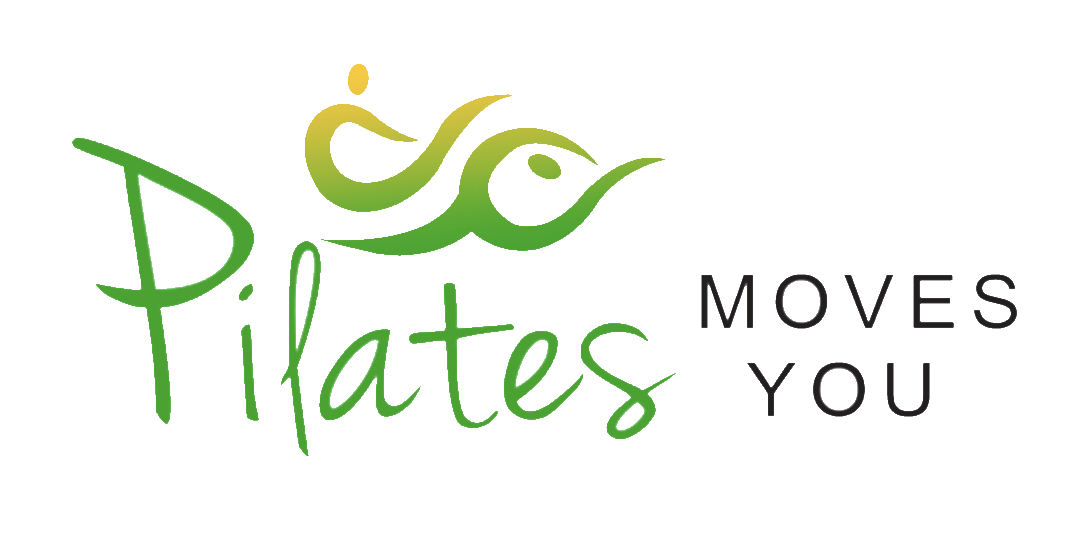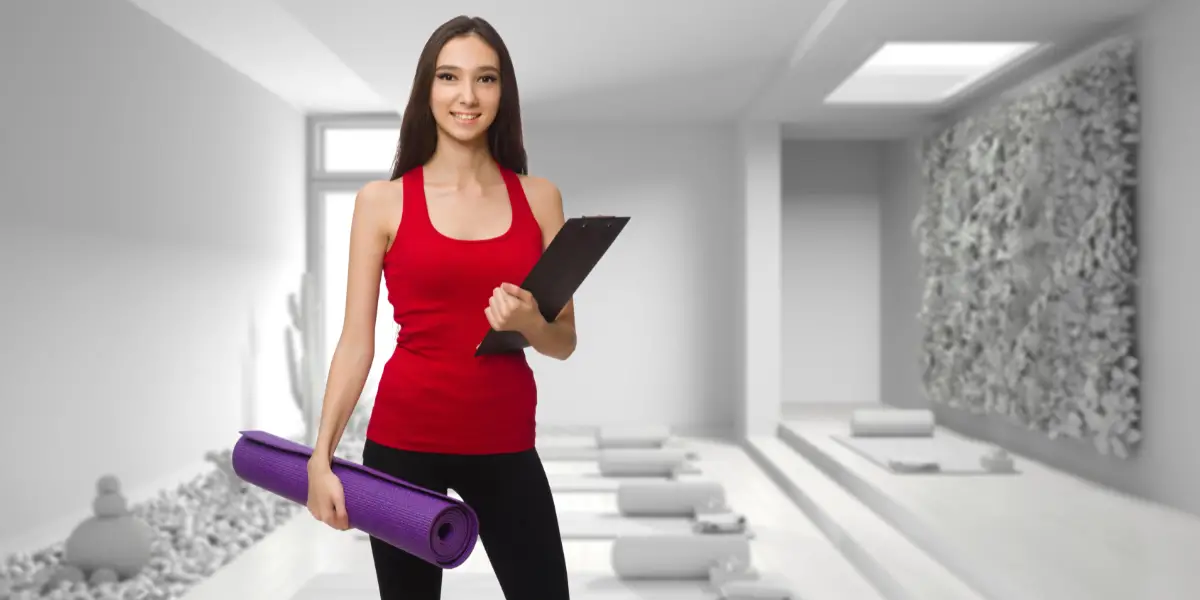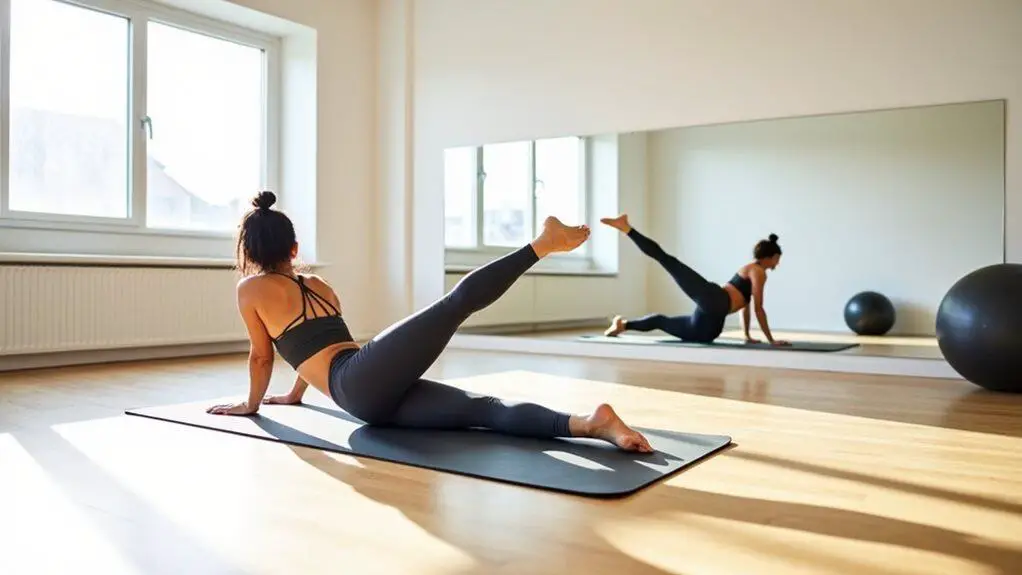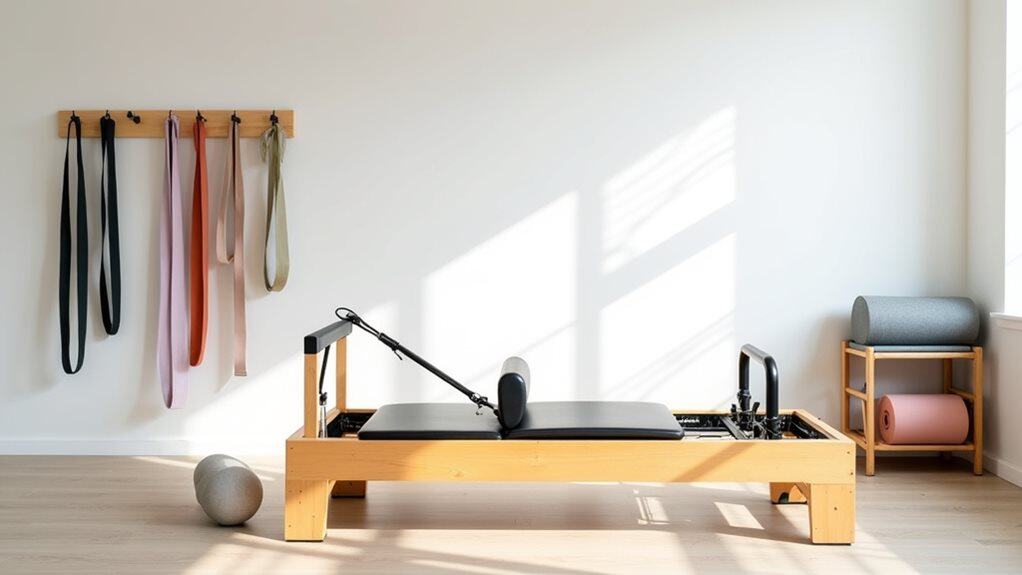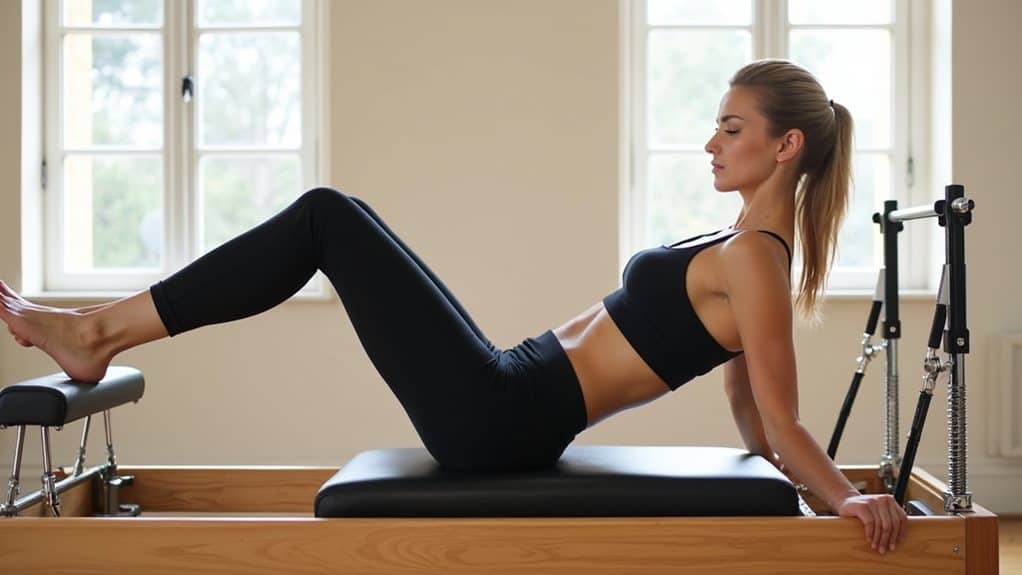When getting started with your Pilates class, it’s essential to be well-prepared. You have to know what you want to accomplish and plan accordingly. That is why I recommend sequencing your Pilates class.
To sequence a Pilates class, focus on a theme or a prop you’re planning to build your class around, then prepare the positions and find a logical flow between them. Ensure you have touched on every targeted body part and exercised your spine in all directions.
In this article, I’ll explain the process of sequencing your Pilates class step by step. I’ll also include a few examples, so you can get a better feel for your own Pilates class planning. Let’s get started!
1. Plan Your Pilates Class Around a Theme or a Prop
Planning your class around a theme or a piece of equipment will make things easier by giving you a better idea of what the class will look like.
A theme can be a core workout, cardio, or getting perfect abs, but you can also base the class around working out with equipment such as a ball, Pilates bar, rings, or just mat training.
Planning around a theme will give you the heading needed for designing your exercises and allow you to make a more rounded class by focusing on what you want to accomplish by the end of it.
Keep in mind that when you’re looking to plan a class based on a piece of equipment, you’ll have to make sure that there’s enough space for all the practitioners to train safely.
Moreover, try to keep in mind the people you’re teaching and their goals, what you need your students to achieve, and what you hope to get as an end result. It’s essential to determine the level of intensity for the class, so you don’t jump from complex to easy exercises without any sense of order.
2. Start the Building Process for Your Pilates Class
After choosing your theme, take a piece of paper or make an Excel table and write down the base of your class, e.i. the theme or the piece of equipment, and then write down every exercise you can think of that pertains to it.
If you’re having trouble envisioning movement cues and progressions, try them out yourself. Starting with the basics, choose a few exercises in each position while adding steps to increase the difficulty level. Don’t be afraid of repetition: feel free to revisit a routine and think about what incorporating different movements achieves, then try adding that to the list.
After identifying the positions, think about the logical flow of the workout. Keep in mind you need to include exercises that engage all major muscle groups, regardless of your chosen theme. More importantly, make time for a warm-up session to avoid any risk of injuries.
3. Write Out the Plan and Go Through the Routine Yourself
After you have found your theme, designed the exercises around it, and incorporated progressions and variations, go through the routine yourself. This will help you see if anything needs changing or if you need to include more things to cover your whole body.
When writing out the plan, make sure your Pilates class encompasses these:
Centering Your Mind and Warming Up Your Body
The best way to start a Pilates class is by centering your mind and warming up your body. Give yourself a moment to focus on your breathing. This is the best way for you and your students to center.
A quality warm-up will increase your heart rate and speed up your blood flow. This, in turn, brings more oxygen to your muscles. Warm-up improves your flexibility and your range of motion.
It also improves your performance and lowers the possibility of injuries, and can minimize the muscle aches that can occur after exercising. Warming up for a few minutes gets the blood and body moving.
The Full Body Workout
This entails challenging the body and pushing it further. The entire body workout is the part where you will feel the burn and have to push through it.
It combines different kinds of exercises that cover the whole body – these exercises should include opening out motion in your joints, and they should push you to extend the range of your movement. The entire body workout should last about 10 minutes and should make you work up a sweat.
Cool-Down Period
The best way to cool down is to do some static stretches. This will allow your body to gradually return to a normal body temperature and heart rate. It also helps with the build-up of lactic acid, lowering the chance of aches, stiffness, and spasms in the days following the workout.
4. Add Interest To Your Pilates Routine
Repeating the same routine can get really boring really soon. As you can imagine, this can make your students far less likely to stay consistent in their Pilates journey, not to mention it can increase the risk of injury. In the best-case scenario, you’ll just be going through the motions and not receiving any real results on the melding body and mind levels.
To avoid that, add little modifications to your routine over time. For example, you can introduce an exercise variation or try a new type of equipment that you don’t usually use. If possible, try to stay within the theme, so you don’t confuse your students too much. This will change things up and keep the level of interest high.
5. Finish the Class in an Intentional Way
For the end of the class, choose exercises that will slow the tempo down. Allow the body to cool off and the breath to normalize. Doing so will allow for an easier transition from physical activity to the everyday class. That way, by the time your students leave your studio, they’re ready to resume their day-to-day activities as usual.
Examples of Pilates Class Sequences
Here are some examples of a few classical Pilates sequences found in the book Return to Life Through Contrology by Joseph Pilates that you can get from Amazon paired with exercise videos from YouTube. These follow the traditional order of exercises passed down by Joseph Pilates himself and are, to this day, used in Pilates classes worldwide.
Here is an example of the Return to life Pilates sequence with the original 34 mat exercise from YouTube:
Here is a 30-minute video of the Spine Corrector group exercise you can find on YouTube:
This is a great YouTube video preview of Foot Corrector exercises applied to normal, healthy feet:
This is a 60 minutes Magic Circle Pilates mat sequence for exercising the full body:
Here is a standing Neck Stretcher on the Cadillac video:
These are a great Small Barrel abdominal workout and a Small Barrel arm sequence
Abdominal workout: https://www.youtube.com/watch?v=AolSJUGLn_A
Arm sequence: https://www.youtube.com/watch?v=1ijm3myoL1g
These are two great workouts for presenting the Arm Weights sequence. One is a mat arm workout with light dumbbells and the other is a simple arm toning standing only sequence.
Mat dumbbell workout: https://www.youtube.com/watch?v=PUJzNyri7vI
Standing arm toning routine: https://www.youtube.com/watch?v=y39ydBwwM7A
Why Is It So Important to Sequence Your Pilates Class?
It’s important to sequence your Pilates class because the order of your exercises matters. Every Pilates routine needs to have a warm-up, a whole body workout, and a cool-down period. In case you deviate from your routine, you might skip something important, like a specific position or a particular exercise needed to round up the whole body workout.
This, in turn, means you won’t push your body’s capability to the maximum and won’t achieve the growth of your range of motion and the targeted muscle tonus.
Moreover, some of the positions will be really hard to do out of sequence because you need to warm up distinct muscle groups to be able to move forward to the next set of exercises with ease.
Why Were Pilates Exercises Created in Sequences?
In the 1920s, Joseph Pilates created Contrology, a set of exercises designed to counteract with the sedentary day-to-day life. They were also meant to restore harmony and cadence to our lives with their flowing motions in order to bring us closer to a healthier lifestyle.
As he said in his book Return to Life, “Pilates aims to recover the body’s natural rhythm and coordination associated with all subconscious activities”.
The sequencing of the workouts is a way of a metaphorical wake-up, returning balance by bringing us closer to a more natural way of moving that was corrupted by the amenities of modern life.
His training philosophy was focused on the body in its totality, making the exercises that target the whole body and not just a distinct muscle or muscle group.
The Pilates method is not only a type of exercise, but a complete and detailed program of mental and physical training with over 500 different exercises, with the main characteristic of all of them being adaptability, flow, and regaining balance in a physical and mental sense.
What Is the Main Focus of a Pilates Workout?
The main focus of Pilates is for you to achieve complete body and mind alignment. The practice is designed to improve your health through a holistic approach, allowing you to become better equipped to handle the inertia of everyday life. Pilates strengthens both your body and mind.
How Long Should a Pilates Session Be?
An entire Pilates session should be 45 minutes. This will give you time to go through a well-rounded workout in which you have time to exercise all the body’s muscles. With today’s hectic lifestyles, even a 10, 20, or 30-minute workout will benefit your overall body strength and health.
How Many Days a Week Do I Need to Do Pilates to See Results?
Pilates should be done a minimum of three times a week, with exercises lasting for 10 to 20 minutes if your goal is to stay in shape. If you’re looking to improve your strength, heighten endurance and reduce body weight, you should do Pilates five times a week.
However, if the practice is combined with other forms of exercise, the frequency can be dialed down a bit. For example, if you weight train two times a week and run another two, doing Pilates three times a week would likely be overkill.
How Long Does It Take To See Results From Pilates?
It takes twenty sessions to see results from Pilates. If you exercise four times a week, it will take you five weeks to notice changes in your body. Joseph Pilates said: “In 10 sessions, you will feel better, in 20, you will look better, and in 30, you will have a whole new body.”
Keep in mind that this quote doesn’t speak strictly to the physical aspect of your health. The phrase “a whole new body” should be taken with a grain of salt, as the creator of the practice was most likely referring to your overall mental and physical state rather than how you look.
Conclusion
Sequencing a Pilates class might seem overwhelming, but in reality, it can be quite easy if you adhere to the plan laid out in this article. The most important element to remember is to take the time to write down everything and make a cohesive theme for your workout.
Don’t forget to bring a little flair to your Pilates routine to stop it from becoming a bore and a burden. Take a chance and try to create your own moves, and most importantly, have fun because Pilates was created to make our lives better, not stress us out!
Sources
- Wikipedia: Joseph Pilates
- Goodreads: Pilates’ Return to Life Through Contrology
- Pilatesology: Mat – Joseph Pilates Return to Life
- YouTube: Return to Life Pilates Mat
- Pilatesology: Classical Spine Corrector Exercises
- YouTube: Spine Corrector 30 Minute Workout
- Pilatesology: Foot Corrector – Basics
- YouTube: Case Study: Foot Corrector Basics for Normal Feet PREVIEW
- Pilatesology: Classical Magic Circle Exercises
- YouTube: 60 minutes Pilates Mat Magic Circle Workout
- Pilatesology: Neck Stretcher – Basics
- YouTube: Standing Neck Stretcher on the Cadillac | OPC Tutorial
- Pilatesology: Classical Small Barrel Exercises
- YouTube: Pilates Small Barrel Abdominal workout
- YouTube: Arm Series on the Small Barrel on the Mat | OPC
- Pilatesology: Basic Arm Weights
- YouTube: Pilates Arms Routine Using Light Hand Weights
- YouTube: Arm Toning Pilates with weights | Standing Only Workout
